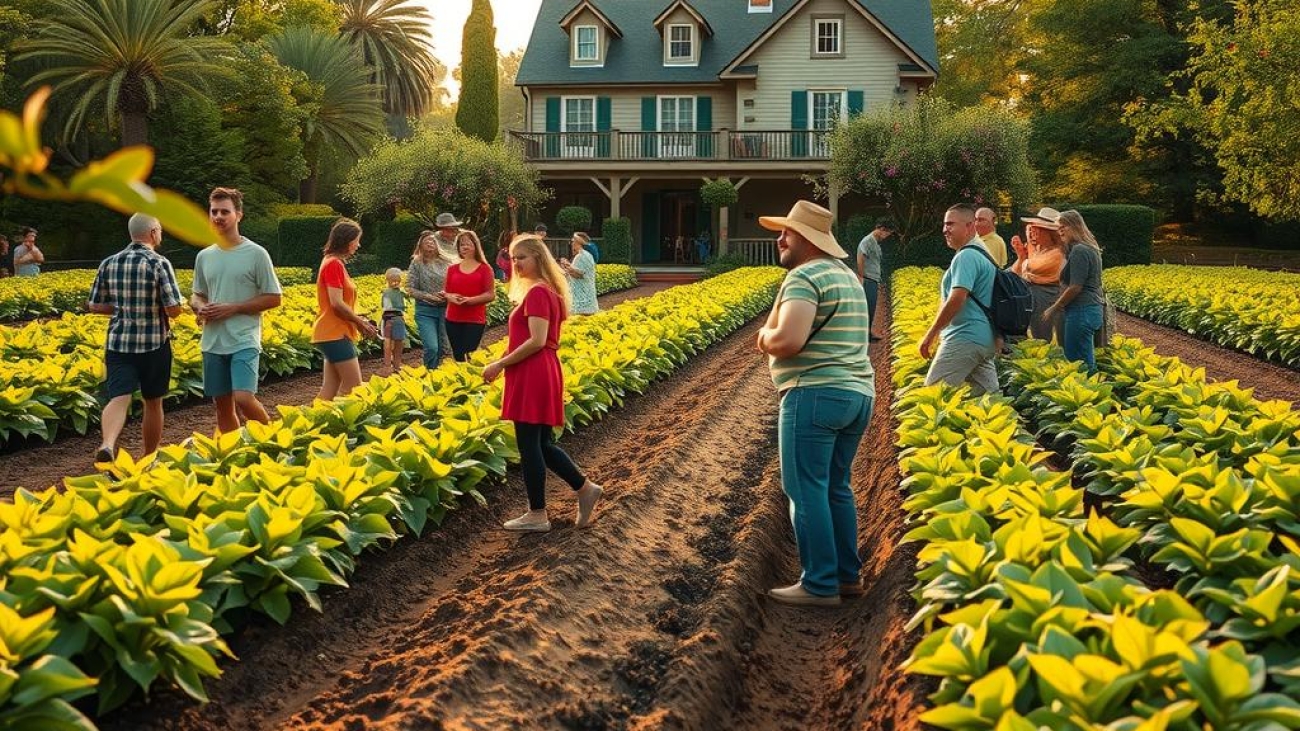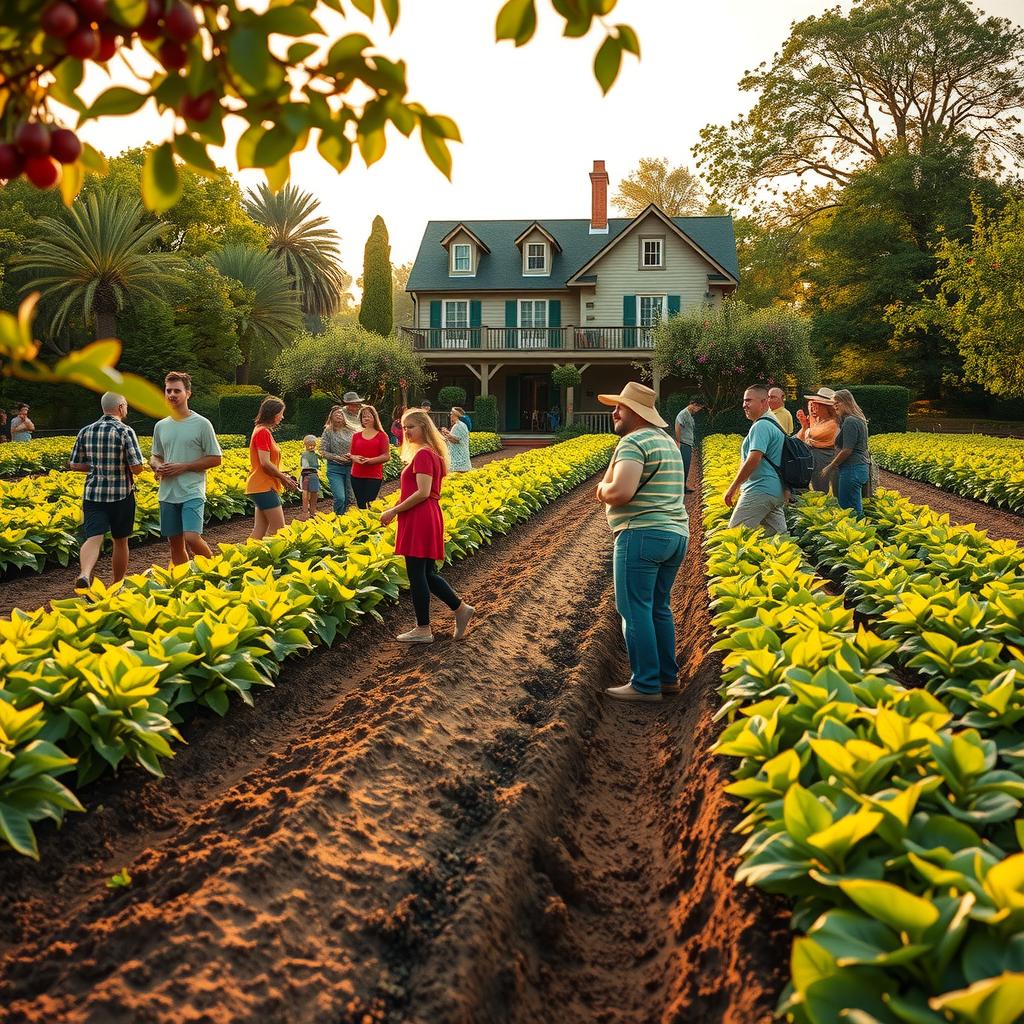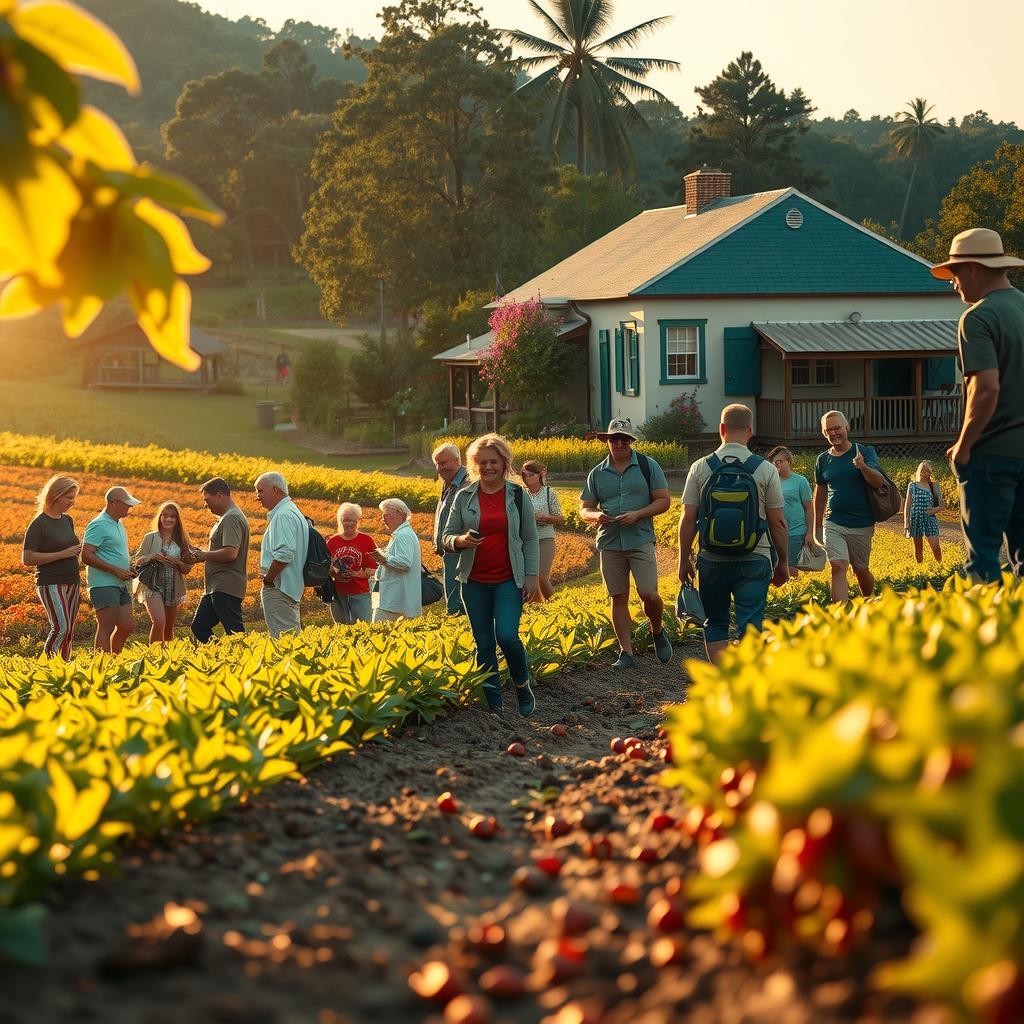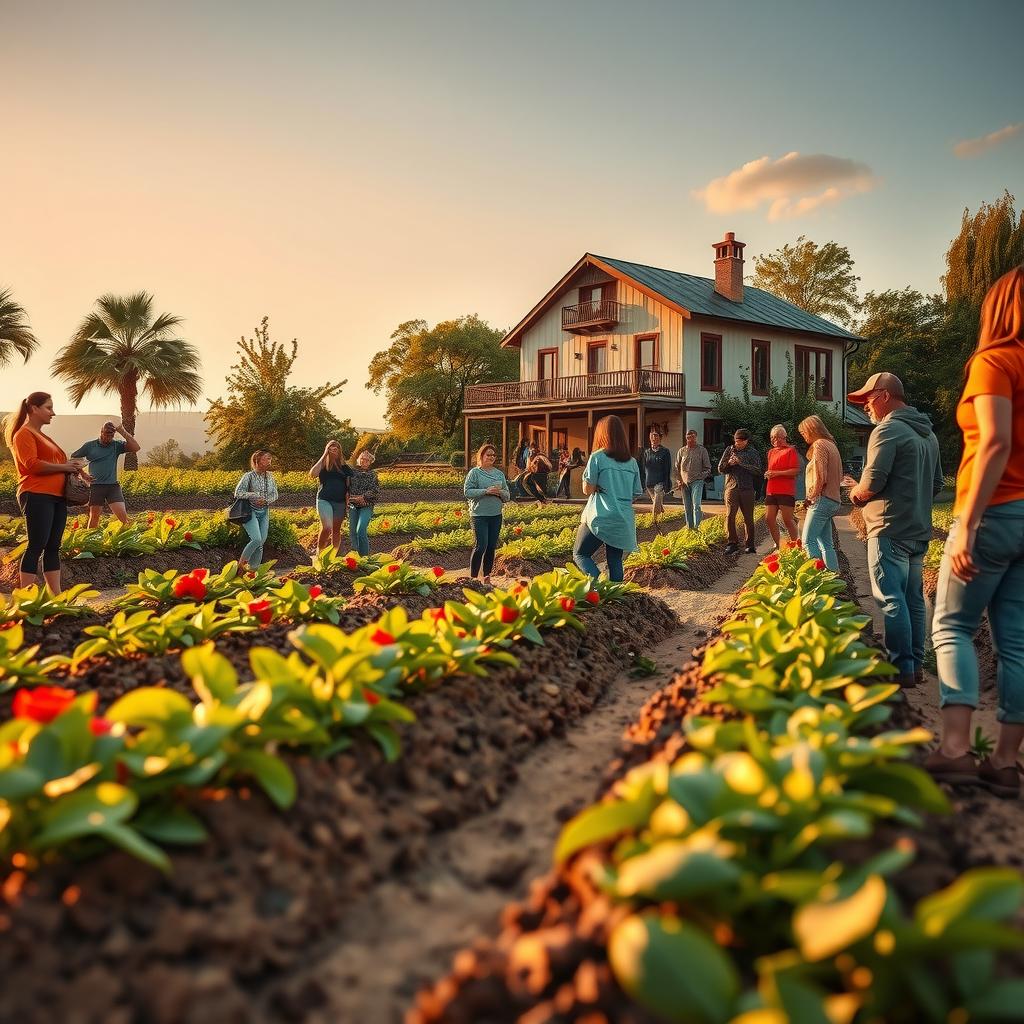In recent years, the rise of Bicycle Tourism has captured the attention of travelers and environmental advocates alike, as more individuals seek to explore new destinations while minimizing their carbon footprint. This shift towards sustainable travel highlights a growing awareness of the pressing need for eco-friendly alternatives in a world increasingly impacted by climate change. By embracing bicycle tourism, adventurers not only enjoy unique experiences that allow them to connect with nature but also contribute positively to local communities through responsible spending and engagement. The charm of pedaling through picturesque landscapes is enhanced by well-planned bicycle routes, which are becoming more prevalent in many regions worldwide, thanks to improved cycling infrastructure.
As cities around the globe strive to become more bike-friendly, they are investing in comprehensive cycling networks that prioritize safety and accessibility for cyclists. These efforts support not only recreational riders but also those who wish to incorporate green transportation into their daily lives during their travels. In this context, bicycle tourism serves as both an activity and a philosophy—encouraging travelers to slow down and appreciate their surroundings instead of racing from one tourist attraction to another in gas-guzzling vehicles.
The impact on local communities cannot be overstated; when tourists choose bicycles over cars or buses, they tend to spend money at local businesses such as cafes, shops, and accommodations that cater specifically to cyclists’ needs. This direct economic benefit fosters a greater sense of community connection while promoting environmental stewardship among both visitors and residents alike. Moreover, engaging in eco-friendly travel can have significant environmental benefits: reduced emissions lead not only to cleaner air but also contribute positively toward preserving ecosystems often overlooked by conventional forms of tourism.
For those considering embarking on an adventure centered around Bicycle Tourism, careful planning is essential for maximizing enjoyment while ensuring the experience aligns with sustainable principles. From researching suitable destinations known for their robust cycling opportunities—such as bike-friendly cities—to understanding how best practices can enhance one’s journey through thoughtful bicycle tour planning—every detail counts toward fostering a truly rewarding experience rooted in respect for nature’s wonders.
Ultimately, embracing bicycle tourism opens doors not just physically but metaphorically too; it invites riders into narratives woven deeply within each landscape traversed while allowing them insight into diverse cultures shaped by geography itself. As interest continues growing in this form of exploration characterized by its low-impact ethos combined with high experiential value—a revolution awaits all who dare take part!

Key points:
-
The Rise of Bicycle Tourism: The trend of Bicycle Tourism has seen significant growth in recent years, driven by an increasing awareness of the environmental benefits associated with cycling. This form of travel not only reduces carbon footprints but also promotes a healthier lifestyle among travelers. By choosing to explore destinations on two wheels, tourists can embrace sustainable travel, contributing positively to local ecosystems while enjoying immersive experiences in nature and urban settings alike.
-
Strategic Planning for Bicycle Tours: Effective bicycle tour planning is crucial for a successful journey. Cyclists must consider various factors such as selecting appropriate bicycle routes, ensuring they have suitable equipment, and adequately preparing for their adventure. Essential preparations include mapping out bike-friendly cities that offer safe paths and amenities catered to cyclists. A well-organized trip allows participants to fully enjoy the advantages of eco-friendly travel while minimizing potential challenges along the way.
-
Development of Cycling Infrastructure: Cities and regions are increasingly recognizing the need for enhanced cycling infrastructure to support the influx of tourists engaging in Bicycle Tourism. Initiatives aimed at creating bike lanes, rental services, and repair stations contribute significantly to making urban areas more accessible for cyclists. These developments not only promote green transportation but also stimulate local economies by attracting visitors who spend money on accommodation, dining, and attractions within these bike-friendly cities.

The Eco-Conscious Choice of Bicycle Tourism
Embracing Nature Through Two Wheels
As the world grapples with climate change and environmental degradation, Bicycle Tourism emerges as a beacon of hope for eco-friendly travel. Opting for bicycles over motor vehicles significantly reduces carbon footprints, contributing to cleaner air and healthier ecosystems. Bicycles produce zero emissions during operation, making them an ideal choice for travelers seeking sustainable transportation methods. Studies have shown that replacing car trips with bike rides can lead to substantial reductions in greenhouse gases. For instance, a single person commuting by bicycle instead of driving can save approximately 1 ton of CO2 emissions per year. This remarkable statistic underscores the potential impact individual choices can have on global sustainability efforts.
Moreover, cycling encourages responsible tourism practices that prioritize local economies and communities over mass consumption models often associated with conventional travel methods. By using bicycle routes, tourists not only engage more intimately with their surroundings but also support small businesses along these paths—cafés, shops, and local artisans benefit directly from increased foot traffic generated by cyclists exploring their regions. As cities invest in enhanced cycling infrastructure, they create bike-friendly environments that attract both tourists and locals alike while simultaneously promoting health-conscious lifestyles.
Promoting Cycling Infrastructure
Building Sustainable Communities Through Cycling
The rise of Bicycle Tourism has catalyzed significant advancements in cycling infrastructure across many urban landscapes worldwide. Cities recognized as bike-friendly typically see improved public health outcomes due to increased physical activity among residents who choose biking as a primary mode of transport. Investments made into developing safe lanes for cyclists not only facilitate easier navigation through urban areas but also create safer spaces for families choosing biking as an alternative means to commute or explore recreational activities together.
Furthermore, well-planned biking networks enhance accessibility to various attractions while minimizing vehicular congestion—a common problem plaguing densely populated cities today. Local governments are increasingly aware of the need to integrate green transportation solutions into their urban planning strategies; thus creating further opportunities for growth within the realm of sustainable travel options like Bicycle Tourism becomes paramount. With municipalities focusing on reducing reliance on fossil fuels through expanded cycling networks, they enable visitors to experience destinations without leaving a heavy ecological footprint behind.
The Social Impact on Local Communities
Connecting People Through Sustainable Travel
Engaging in Bicycle Tourism offers unique social benefits beyond just environmental advantages; it fosters connections between travelers and local communities that traditional modes may overlook or disrupt entirely. Travelers traversing scenic valleys or quaint towns via bicycle often find themselves interacting with residents more naturally than when confined within cars or buses—a chance encounter at a roadside market could lead to rich cultural exchanges that deepen appreciation for diverse lifestyles.
In addition, community events centered around cycling encourage collective participation among locals and visitors alike—community-led bike tours showcase regional history while promoting awareness about environmental issues tied closely with land conservation efforts alongside economic development initiatives supported by tourism revenue streams generated through bicycle tourism activities such as guided rides or rental services available throughout popular destinations frequented by cyclists worldwide.
Through thoughtful engagement fueled primarily by passion-driven exploration facilitated exclusively via bikes rather than automobiles alone enhances overall experiences gained from each journey undertaken under this growing movement focused heavily upon embracing environmentally conscious forms offered specifically through innovative approaches found within frameworks embraced actively spanning across various continents globally today!

Planning Your Adventure: Essential Routes and Gear
A Comprehensive Guide to Bicycle Tourism
When embarking on a journey into the realm of Bicycle Tourism, selecting the right bicycle routes is paramount for ensuring an enjoyable and memorable experience. Cyclists should prioritize routes that not only offer breathtaking scenery but also feature robust cycling infrastructure. Bike-friendly cities, characterized by well-maintained bike lanes and supportive amenities, enhance safety and comfort for cyclists exploring new territories. Moreover, many regions have curated bicycle routes that highlight local attractions while promoting sustainable travel practices. This approach aligns seamlessly with the principles of eco-friendly travel, as it encourages individuals to immerse themselves in nature while minimizing their carbon footprint.
Preparation is equally critical when planning a bicycle tour; ensuring access to essential gear will significantly impact overall enjoyment during the ride. Cyclists are advised to invest in quality equipment such as helmets, padded shorts, and multi-functional tools designed specifically for maintenance needs on-the-go. Additionally, packing lightweight camping gear can facilitate overnight stays in scenic locations without compromising mobility or performance. It’s important for travelers engaging in bicycle tourism to recognize how their choices affect local communities; opting for locally sourced food or accommodations fosters economic growth within those areas while enhancing one’s travel experience through authentic interactions with residents.
Cycling offers numerous environmental benefits compared to traditional means of transportation—making it a viable alternative that promotes green transportation initiatives across various regions. By choosing bicycles over cars or buses during tours, cyclists contribute positively toward reducing greenhouse gas emissions whilst enjoying their surroundings more intimately than they would from behind a vehicle window. Furthermore, exploring less trodden paths often leads riders through picturesque landscapes where they can appreciate biodiversity firsthand.
As part of effective bicycle tour planning, understanding weather conditions is crucial before setting out on any adventure; this knowledge aids cyclists in determining suitable attire and optimal times for riding each day based on temperature fluctuations or potential rain showers along chosen routes. Local resources—such as community boards at parks or online forums dedicated specifically to cycling enthusiasts—can provide invaluable insights regarding trail conditions which may vary throughout seasons.
The impact of traveling via bike extends beyond personal health benefits associated with physical activity; it supports preservation efforts undertaken by conservation organizations working tirelessly toward sustainability goals globally as well! While traversing these beautiful landscapes using bicycles not only amplifies appreciation towards natural environments but also reinforces commitment towards protecting them from further degradation caused by motorized traffic congestion typical within urban settings today.
In conclusion, embracing Bicycle Tourism entails meticulous attention paid both route selection alongside necessary preparations made beforehand ensures success during any planned expedition! With proper foresight paired together with enthusiasm shared amongst fellow adventurers alike—the opportunities awaiting participants remain endless when discovering all layers encompassing our world around us—all via two wheels instead!
Building a Bicycle-Friendly Future
Enhancing Urban Infrastructure to Attract Bicycle Tourists
Cities around the world are increasingly recognizing the potential of Bicycle Tourism as a catalyst for sustainable travel and eco-friendly travel initiatives. By investing in comprehensive cycling infrastructure, urban planners aim to create bike-friendly cities that not only support local residents but also attract tourists eager to explore new destinations on two wheels. Many metropolitan areas are enhancing their roadway systems with dedicated bicycle routes, which include separated lanes and well-maintained paths, making it safer and more appealing for cyclists of all skill levels. This shift is crucial as it aligns with global trends towards green transportation, reducing carbon footprints while promoting healthier lifestyles among both locals and visitors.
Moreover, cities are starting to incorporate bicycle rental programs that allow tourists easy access to bikes at strategic locations throughout urban centers. These services often come equipped with maps detailing the best cycling routes that showcase local attractions, parks, historic sites, and scenic views—providing an immersive experience into the culture of each area. The impact on local communities can be profound; when tourists arrive by bike rather than car or bus, they tend to spend more time in neighborhoods away from traditional tourist traps, thus fostering economic growth through small businesses like cafes and shops along these biking pathways.
In addition to practical considerations such as safety features and rental accessibility, municipalities are focusing on the environmental benefits of cycling. Studies show that increased participation in Bicycle Tourism leads not only to reduced traffic congestion but also contributes positively toward mitigating climate change effects by lowering greenhouse gas emissions associated with vehicle use. As cities develop strategies for bicycle tour planning—considering factors like ease of navigation and proximity between key points—they simultaneously promote a lifestyle change that encourages both residents and visitors alike to embrace cycling as a primary means of transport.
As various regions across the globe pave new paths toward becoming leading hubs for bicycle tourism, they highlight how important it is for governments at all levels to prioritize investments in sustainable infrastructure geared towards cyclists. This approach ultimately enhances community well-being while inviting travelers who seek authentic experiences defined by exploration through biking adventures—a testament to how thoughtfully designed environments can yield rich rewards economically, socially, and environmentally within our modern urban landscapes.
The rise of Bicycle Tourism reflects an increasing awareness of the environmental benefits associated with cycling as a mode of travel. As travelers seek eco-friendly travel options, bicycle tourism offers a sustainable alternative to traditional transportation methods. By choosing bicycles over motorized vehicles, tourists can significantly reduce their carbon footprints, contributing to cleaner air and less congestion in popular destinations. This shift not only aids in promoting green transportation but also enhances the overall experience by allowing cyclists to engage more intimately with nature and local cultures.
Planning a successful bicycle tour requires careful consideration of various factors including routes, equipment, and preparation. Individuals interested in embarking on Bicycle Tourism should research suitable bicycle routes that offer both scenic views and safety for cyclists. Adequate gear is essential; this includes not just a reliable bike but also appropriate clothing, repair kits, and navigation tools. Moreover, understanding the local terrain and climate conditions enables travelers to prepare effectively for their journey—ensuring they have an enjoyable and safe adventure while embracing sustainable travel practices.
Cities around the globe are increasingly recognizing the importance of developing cycling infrastructure to attract tourists engaged in Bicycle Tourism. Many urban areas are enhancing their appeal as bike-friendly cities by creating dedicated bike lanes, secure parking facilities for bicycles, and comprehensive signage that helps navigate preferred cycling routes. Such initiatives not only make it easier for visitors to explore these locations sustainably but also foster community pride by encouraging local residents to adopt cycling as part of their daily lives—a practice that ultimately leads to healthier lifestyles within those communities.
Common Inquiries:
Q: What are some key advantages of choosing bicycle tourism?
A: Bicycle tourism promotes environmentally friendly travel by reducing emissions associated with transport while providing an immersive way for tourists to experience locales closely tied to nature and culture.
Q: How should one prepare when planning a bicycle tour?
A: Effective planning involves selecting suitable bicycle routes, ensuring proper equipment like helmets or puncture repair kits is ready at hand, checking weather forecasts ahead of time, and mapping out rest stops along the way.
Q: Why is infrastructure important for supporting bicycle tourism?
A: Developing robust cycling infrastructure encourages more people—including tourists—to opt for bikes over cars which reduces traffic congestion while simultaneously benefiting local economies through increased visitor spending on services like accommodations or eateries tailored toward cyclists’ needs.




